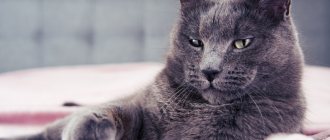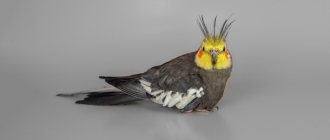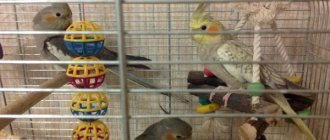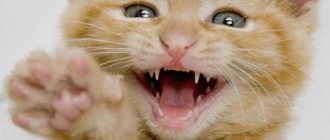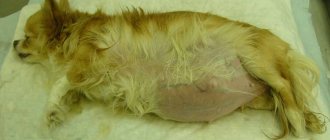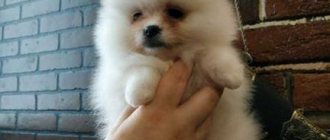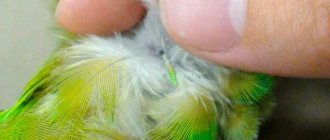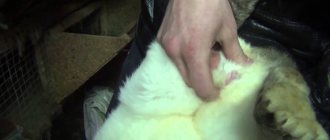Shedding in cockatiels is a common occurrence that occurs in all parrots at one time or another. However, for inexperienced owners it often causes fear and concern for the health of their pet. In most cases, cockatiels' feathers fall out due to natural reasons, but it happens that this process occurs due to illness. Let's talk about when cockatiel parrots begin to molt, how you can help your pet during this difficult period for him, about the natural and pathological reasons for the change in plumage.
At what age does a cockatiel begin to shed?
Corella parrots are born with soft and thick yellow down. After some time, the birds begin to naturally molt, after which “adult”, more colorful and brighter plumage appears. Experienced ornithologists are able to determine the male and female by its color and saturation.
First (juvenile)
The first molt (also called juvenile) in a cockatiel begins at approximately 4 to 6 months of age. She says that the chicks are already fully mature and will eventually be ready to give birth to new offspring. The thin downy cover is replaced by stronger feathers, which not only better protect the body, but also enable the bird to fly. Molting is one of the most natural processes in the animal world that occurs with young animals, and not only with cockatiels.
Depending on the diet and living conditions, the cockatiel may begin to shed earlier or later. If a bird aged 6 months or older does not change its plumage, this indicates health problems.
Attention! Complete renewal of plumage during juvenile molting occurs by 12 months. From this moment on, the cockatiel is considered sexually mature and can have offspring.
Periodic
Subsequent molts of parrots are called periodic; they are associated with the seasons of the year and the nesting period. If a cockatiel lives alone, it loses old feathers once a year (sometimes 2 times), from September to December. This type of molting in Corella parrots lasts 1 month. During this time, the old feathers are completely replaced with new ones.
If a pair of cockatiels are in mating season, they may begin to molt immediately after mating or some time later when the female lays eggs.
Important! During the molting period, the cockatiel can become aggressive because the process of sprouting new feathers causes discomfort, irritating the pet's skin. Some, on the contrary, become drowsy and lethargic, as they try to sleep more at this time, but they do not always succeed.
Therefore, during such a period, the owner needs to be especially attentive and patient with the parrot.
Molting in a cockatiel parrot
Physiological molting in cockatiels is a direct replacement of old feathers with fresh ones. As a rule, molting occurs 1-2 times a year and lasts about a month. In some cases, the replacement of plumage is delayed or appears at the wrong time, indicating a disruption in the functioning of the parrot’s body. I will outline what to do in such cases below.
Natural process
Feathers protect the skin of cockatiels and maintain the natural body temperature of 40.1-40.2 degrees. A feather is necessary for flight and attracting the opposite sex. According to their colors, you can distinguish a female from a male.
But the plumage cannot be regularly in the same state. From time to time, old, frayed feathers come out from cockatiels, and fresh ones grow in their area. This is called molting. The replacement of plumage is greatly influenced by a number of conditions:
- age;
- Seasons;
- nesting;
- conditions of detention: food, moisture, temperature, light.
Molting is divided into main (juvenile) and periodic.
The first feather change occurs in young parrots at 4-6 months and is completed at approximately 12 months. If a bird’s body develops a deficiency of vitamin and mineral elements or the conditions of detention are not suitable for it, then the timing of the 1st molt has every chance of changing. Lack of shedding properties after 6 months must tell the cockatiel owner about the problem with his well-being.
Parrots replace their original feathers and fluff with the most beautiful and strong feathers. The molting of young animals is called juvenile, since it coincides with the sexual maturation of cockatiels. After complete replacement of the plumage, it will be possible to determine the sex of the bird.
All further molts are considered to be periodic. They are associated with the time of year and nesting. For cockatiels that live alone, molting occurs once a year, usually on winter days. In cockatiels, which are not deprived of the ability to reproduce, molting occurs after nesting is complete: 2 times a year, in the spring and in the winter.
How the plumage is replaced
Nature took care of this so that molting does not have a big impact on the normal way of life of parrots. The flight feathers and tail feathers begin to pop out little by little and in pairs, without in any way depriving the parrot of its ability to flutter. But the flights become the most abrupt. Speed contributes to the rapid loss of old feathers. Small feathers that cover the entire body of the bird without exception come out chaotically.
At the moment of molting, at the bottom of the cage you can notice not only a large number of flying feathers, but also a fluffy speck of dust, similar to powder. This is a special secret that is produced by the down feathers of the cockatiel. In addition, small snow-white scales fall from the parrot - particles from the tubes from which fresh feathers emerged.
Gradually, the parrot's body becomes covered with stump tubes of growing feathers. If you look closely at the plumage of a bird, among the formed feathers you can notice fresh feathers at all stages of formation: from unopened to fresh.
While the molt is taking place, the bird itches regularly. In some cases, she screams in pain, hitting the tube of a growing feather or strongly pulling an old one. Certain birds may scream deafeningly and demand the owner to scratch them. Due to skin scabies, the cockatiel becomes anxious and can show anger. She looks apathetic and lazy - she strives to rest as much as possible, which is not possible every time.
Necessary care
Diet
Natural shedding is not considered a disease. However, in order for a parrot to develop strong, shiny and well-colored feathers, it needs complete and varied feeding.
It is necessary to add a vitamin and mineral supplement to the bird's menu: bone meal, limestone, sepia, crushed eggshells. Once a day, your cockatiel should be given a crushed calcium gluconate tablet. A variety of vitamin premixes will have a positive effect on the bird’s body. Buy vitamins from proven brands, for example, Vita Sol or Beaphar Vinka.
Vegetables, sprouted seeds, fruits, berries, branches of fruit trees, and vegetation are required. It is possible to buy special Rio grain composition for parrots at the time of molting. Protein foods are also irreplaceable: eggs, low-fat cottage cheese. Numerous life foods also store protein: mealy worms, grasshoppers and other insects.
Conditions of detention
To distract your parrot from discomfort during the molting period, let him out of his cage as much as possible for walks around the room. This applies more to adult parrots. Birds starting to molt for the first time, out of habit, have every chance of not being able to fly. To avoid injury, it is preferable to leave them in the cage until the feather replacement is completed.
Water exercises can also relieve your cockatiel from dermatological itching. Hang a bathing suit with hot water at a temperature of 25 degrees in a cage and do not forget to check the cleanliness of the water. If your pet doesn’t like splashing, try spraying it with a spray bottle.
At the time of molting, the bird is very susceptible to changes in temperature and dry air. Maintain the temperature in the room at 20-25 degrees and the moisture content at sixty-70%. Do not place the cage with the bird in a draft or near radiators.
It happens that instead of standard molting, a bird can quickly become bald. This should be a cause for concern.
Cockatiel plumage diseases
Prolonged shedding
If a parrot's molting is prolonged, this is very bad. Often this happens due to poor feeding and unsuitable living conditions. However, if you follow absolutely all of the above laws of caring for parrots during the molting period, therefore, the prerequisites are different:
- there are few elements in the body for the development of new feathers due to the natural pathology of the absorption of vitamins A and D by the intestinal tract of the bird;
- kidney or liver diseases;
- tumors;
- hormonal imbalances.
With pathological molting, a large number of unopened stumps and bald areas appear on the bird’s body, which is why it looks plucked. The parrot is depressed, often itches and pecks itself.
To support the bird, continue to feed it fully and variedly. Guarantee your child sunbathing in the fresh air in good weather and artificial light with ultraviolet lamps in the cool season. If all else fails, take your cockatiel to a veterinarian for a clear diagnosis and direction of treatment.
Shock shedding
At the moment of shock or intense molting, feathers fall unexpectedly, at any time of the year, in large numbers and in bunches. As a rule, the parrot's tail becomes very bald. Shock molting can be triggered by any tense situation: from a sudden change in conditions to fear.
In case of shock molting, medical intervention is not required - you can cope without the help of others. During periods of stress, a parrot's body temperature decreases. Warming the bird near a 40-watt incandescent lamp will help prevent colds.
To give the bird a chance to calm down, move the cage into a quiet room and close the doors. No one or anything should disturb the cockatiel for at least a little time. To regenerate plumage, provide the bird with abundant vitamins and minerals.
French molt
This significant disease was first identified in France in the twentieth century. It occurs in cockatiels even before leaving the nest or immediately after leaving. During the French molt, the chick's flight and tail feathers begin to pop out. At first, they either grow back with imperfections or don’t grow back at all. The child loses the ability to float and spends his entire life on his paws. Because of this, sick parrots were called “runners.”
French molt is a little-studied pathology. There are only theories of its appearance:
- virus;
- exhaustion of the mother’s body due to intense laying;
- lack of protein in the menu of father and mother and chicks.
No one has yet identified an effective method for curing this pathology. Scientists do not know whether French molt is considered a hereditary disease. However, those who are interested in breeding birds need to beware of individuals in a flock of which the disease was discovered. When nesting, parrots must receive properly balanced feeding rich in proteins. A female should not be forced to lay eggs more than twice a year.
Unfortunately, numerous breeders strive to get rid of sick parrots for profit. If you encounter this kind of task, be humane. This is on a physical level and mentally healthy birds. If the “runner” is equipped with a cell taking into account his limited abilities, he will be able to carry out a full-fledged existence even in the absence of flights.
Feather follicle cysts
This violation is associated with the incorrect structure of the pen. Due to excessive plasticity, it cannot break through the skin and curls inside the tube. Over time, the unsprouted feather begins to secrete a special secretion, initiating suppuration of nearby materials. This is indicated by hard crusts in the plane of the skin where the feather should be.
The bird is able to peck at the crusts, initiating blood flow. To avoid this, surgical intervention will be required. Only a veterinarian can remove a cyst and only under anesthesia!
How does plumage change?
The process of natural molting in cockatiels is different from the process of feather loss due to illness. When a cockatiel molts, pay attention to how it happens:
- With the natural change of plumage, large feathers (tail feathers, flight feathers) fall out gradually - this is necessary so that the bird does not lose the ability to fly. It is the large feathers that lift the bird into the air. The pet will fly, although you will notice that its flights will become more abrupt during this period. This speed helps old feathers fall out faster;
- the tail plumage falls out gradually, being renewed from the periphery to the center. Wing feathers, being renewed, fall out in pairs once a week;
- small feathers covering the entire body fall out haphazardly and chaotically. This plumage maintains body temperature and protects against hypothermia. When cockatiels molt, spending most of their time in a cage, they can lose almost half of their plumage in a day.
Unnatural loss of plumage (disease)
It often happens that a parrot loses its plumage, but this is not due to natural molting. This can be caused by many factors, including stress. It is important to distinguish a normal process from a destructive one at an early stage.
Prolonged shedding
In fact, this is a standard change of plumage, except that the parrot does not have enough minerals and vitamins to restore the cover. As a result, the body cannot produce new keratinous surfaces, and your pet walks around “naked.”
If the diet is balanced and the parrot is well looked after, then the following may be the cause:
- kidney or liver disease;
- the presence of malignant tumors;
- hormonal imbalances.
Only an experienced veterinarian who has encountered this before can make an accurate diagnosis. The problem is that it is impossible to use accurate analytical methods in relation to poultry.
Shock (stress)
The most common pathological molting, which is observed in parrots of all breeds.
The root cause can be any negative factor, namely:
- change of place;
- other food;
- monotonous diet;
- change in conditions of detention;
- bright light;
- loud sounds;
- aggression from the owner;
- other domestic animals, including parrots;
- lack of communication.
If a bird is in uncomfortable conditions for a long time, it begins to molt.
This is a peculiar reaction of the parrot to irritants, so the “treatment” consists of eliminating the factors that caused the loss of plumage. It also wouldn’t hurt to introduce additional vitamin and mineral mixtures.
During shock molting, the tail of cockatiels becomes bald, but the cover remains on other parts of the body.
The pet is constantly frightened by something and may show aggression or apathy. In some cases, there is a refusal of food and treats.
French
This is an unstudied disease that was first diagnosed in parrots in France. The problem is that in young animals, before or after the juvenile moult, flight and tail feathers fall out, after which they either do not grow back at all or are formed with flaws. This leads to the inability to fly.
It is worth understanding that these birds are no different from their relatives, except that they cannot fly. This does not affect their psyche or behavior, since the disease manifests itself at an early age, even at the stage of habit formation.
Feather follicle cyst
A serious disease that occurs due to excessive softness of feather “embryos” that have not yet broken through the epidermis. This leads to the fact that the feather, continuing to grow, curls under the skin, causing inflammation of the follicle. This occurs due to the work of the sebaceous glands, as well as pressure on neighboring tissues.
The main symptom of the disease is the appearance of dry crusts on the skin. They form in those places where a new feather should have appeared. The problem is that the inflammation does not go away over time, which is why it is necessary to contact a veterinarian. The specialist performs a simple operation to remove the cyst.
The molting process is typical for many domestic and wild birds, but it is important to distinguish seasonal changes in plumage from diseases in time. Remember that if the parrot came into contact with other animals or left the house, then it could develop blood-sucking parasites, which also cause feathers to fall out.
Sources:
https://dlaptits.ru/ptitsevodstvo/popugai_korella/linka/2-1-0-108 https://ptitsadoma.ru/popugai/korella/linka-u-korell.html https://pets2.me/bok/ 1590-linka-u-korelly-pervaya-i-periodicheskaya.html
Caring for a parrot during the molting period
When cockatiel parrots begin molting, the bird spends not only a lot of energy, but also useful substances. Therefore, it is important during this period to provide the feathered pet with optimal living conditions and a diet enriched with vitamins and minerals.
Diet
Human hair and bird feathers are made of the same substance - keratin. Imagine how varied and rich in nutrients a cockatiel’s diet must be so that it can completely change its plumage in a month.
In this table you can see what a cockatiel's diet should be when molting:
| Food Ingredients | Products |
| Vegetables | Zucchini, carrots, cabbage, pumpkin |
| Greenery | Spinach, oat and wheat sprouts, dandelion and plantain leaves, carrot and beet tops, young branches and shoots of fruit trees |
| Fruits, berries | Apples, cherries, raspberries, bananas, grapes, cherries, strawberries |
| Protein products | Low-fat cottage cheese, chicken eggs |
| Mineral supplements | Crushed eggshells, chalk, sepia, bone meal, mineral stone, sand, limestone, crushed calcium gluconate tablets (1 piece per day) |
| Animal feed | Mealworms, bloodworms, grasshoppers, other insects |
| Vitamins | "Beaphar Mauser Tropfen", "Beaphar Vinka", "Vitacraft", "Vita-Sol Multi Vitamins", brewer's yeast, Rio grain mixture |
A chamomile decoction will relieve itching where new feathers appear. You need to pour 1 tbsp. of this herb with a glass of boiling water, cool to room temperature and spray it from time to time on the bald spots on the body of the cockatiel parrot.
Watch this video about what a cockatiel eats during molting:
Conditions of detention
Caring for your cockatiel during the molting period should also change. The state and mood of the bird changes at this time, so you need to adhere to the following rules:
- A young cockatiel that has undergone a juvenile molt should not be released from the cage for some time, as due to unusual changes in plumage, it may not be able to cope with the flight and fall, severely injuring itself. If the pet is an adult, on the contrary, it is worth letting him out of the cage more often - this will give him the opportunity to distract himself from unpleasant sensations and make it easier for the old feathers to fall out.
- Considering how long it takes for cockatiels to molt, water procedures in the shower can speed up the change of plumage. Bathing in a bath that can be installed directly in the cage is a good way to relieve itching from the skin. True, this option is not suitable for those cockatiels that are especially aggressive during the molting period. They can spill water from the bathing suit and create a lot of litter around.
- Bald patches that appear on the body of a parrot are not able to protect it from cold and temperature changes, therefore it is important at this time to maintain a comfortable microclimate in the room: air temperature + 20-25 ° C, humidity 60-70%.
Causes of unnatural feather loss
The Corella parrot does not always lose feathers for natural reasons. Any change in microclimate, stressful situation, unbalanced diet, regardless of the period of the year, can cause this phenomenon. Not to mention the health problem. It is important at first to distinguish between juvenile or periodic molting and pathological molting.
If there is a deficiency of minerals and vitamins, the parrot's body is not able to produce keratin in sufficient quantities to restore the feather cover, so the bird may remain bald. Changing your diet quickly solves this problem. Things are worse with other factors.
Tumors, liver or kidney diseases, hormonal imbalance, problems with the absorption of vitamins A and D in the intestines - this is a list of some of the causes of pathological molting. On the body and wings of the bird you can notice a large number of bald areas and unopened feather tubes. The bird looks plucked, unkempt, depressed, constantly itching and pecking itself. To determine the exact cause of this condition, you need to consult a veterinarian.
Stress
Due to stress, unnatural molting occurs most often in Corella parrots. By losing their plumage, birds can react to any change in their usual environment:
- change of place of residence;
- change in conditions of detention;
- monotonous nutrition and even just a change of food;
- loud noise and sharp sounds;
- bright light;
- the appearance of a new family member or his absence;
- the arrival of a new pet;
- feeling of loneliness;
- indifference or aggression on the part of the owners.
Prolonged exposure to any of these factors leads to pathological molting. Feather loss can only be treated by eliminating the irritant.
Clear signs of shock molting in a cockatiel are the sudden and dramatic loss of hair on the parrot's tail, while the rest of the plumage remains intact. The bird becomes shy, may be apathetic or, conversely, aggressive. Often refuses usual games, food and even favorite treats.
To help your pet in this situation, it is not necessary to see a doctor. Provide your parrot with a calm environment and improve its nutrition with vitamins and minerals. Considering that in a stressful situation a bird’s body temperature drops so that it does not catch a cold, provide it with heating with an incandescent lamp, placing it half a meter near the cage.
Skin diseases
Often the cockatiel plucks its feathers itself due to dermatological diseases (mycoses, dermatoses, dermatitis). A deficiency of nutrients, factors that irritate the skin, dry air in the room, and stressful situations can cause such problems.
The cockatiel becomes restless, sits, ruffled, at the bottom of the cage or perch, itches all the time and plucks its feathers. Severe itching is caused by scratching on the body, wounds, and bald areas. The skin looks painful and inflamed. Neglected conditions lead to complete baldness of the parrot on the tail and wings.
Cockatiel plumage diseases
Prolonged shedding
If a parrot's molting is prolonged, this is very bad. This often happens due to poor nutrition and unsuitable living conditions. But if you adhere to all the above rules for caring for cockatiels during molting, then the reasons are different:
- there are not enough substances in the body to form new feathers due to a congenital malabsorption of vitamins A and D by the bird’s intestines;
- kidney or liver disease;
- tumors;
- hormonal imbalances.
With pathological molting, a cockatiel's body appears with many unopened stumps and bald areas, which makes it look plucked. The parrot is depressed, often itches and pecks itself.
To help your bird, continue to feed it a nutritious and varied diet. Provide your pet with sunbathing in the fresh air in good weather and artificial lighting with ultraviolet lamps in the cold season. If all else fails, take your cockatiel to the vet for an accurate diagnosis and treatment.
Shock shedding
During shock or stress molting, feathers fall out suddenly, at any time of the year, in large numbers and in bunches. It is common for a cockatiel's tail to become very bald. Shock molting can be caused by any stressful situation: from a sudden change of environment to fright.
With shock molting, a doctor’s intervention is not required - you can cope on your own. During times of stress, a parrot's body temperature decreases. Heating the bird under forty-watt incandescent lamps will help avoid colds.
To help your bird calm down, take the cage to a quiet room and close the door. No one and nothing should disturb the cockatiel for at least a few hours. To restore plumage, provide the bird with nutrients, vitamins and minerals.
French molt
This serious disease was first discovered in France in the twentieth century. It appears in parrots even before leaving the nest or immediately after leaving. During the French molt, the chick's flight and tail feathers begin to fall out. They either grow back with flaws or do not grow back at all. The chick loses the ability to fly and spends its entire life on its feet. For this, sick parrots were nicknamed “runners.”
French molt is an unknown disease. There are only assumptions about its occurrence:
- virus;
- exhaustion of the mother’s body due to frequent clutches;
- lack of protein in the diet of parents and chicks.
No one has yet discovered a successful treatment for this pathology.
Scientists do not know whether French molt is a hereditary disease. However, those who breed cockatiels should avoid individuals in whose flock the disease has been observed. When nesting, parrots should receive a properly balanced diet rich in proteins. A female should not be forced to lay eggs more than twice a year. Unfortunately, many breeders try to get rid of sick parrots for the sake of profit.
If you are faced with such a problem, be humane. These are physically and mentally healthy birds. If a “runner” is equipped with a cage that takes into account his limited capabilities, he will be able to lead a full life without flying.
